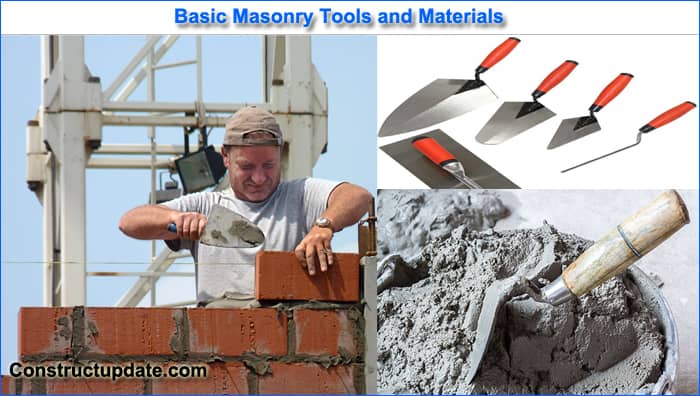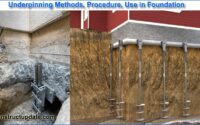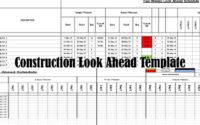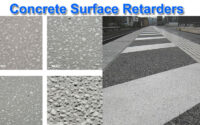Basic Masonry Tools and Materials – Tools and Materials for Brick Masonry
Any masonry job can be completed by you if you take your time, consult professionals, and use the proper equipment. Prior to starting any job involving the construction of concrete, stone, or brick, you should have the following basic masonry tools.
Basic Masonry Tools
As befits a craft that has been performed since the time of ancient Egypt, masonry work uses ordinary materials like crushed stone and limestone from the earth along with simple metal shaping tools. If you want to do your own masonry work for fireplaces, walls, planters, or pretty much anything else that uses brick or stone, you should invest in a fundamental set of masonry tools.
1. Brick Hammer
A brick hammer, also known as a mason’s hammer, differs from a regular hammer used for daily tasks. It is a square-tipped, blunt hammer made especially for breaking concrete, brick, and other hard materials. The other side is thin and chisel-like and is intended for scoring or chipping away at tiny patches of stone, brick, or concrete in order to achieve more precise breaks.
2. Margin Trowel
This flat-nosed trowel is used to apply tiny quantities of mortar in constrained areas. This is the closest thing you’ll find to an all-purpose universal trowel for all kinds of masonry tasks.
3. Cold Chisel
The term “cold chisel” is somewhat misleading. It is used to cut cold metal and is not intended for use in cold conditions. It is ideal for carving stone because of this. These are made of hardened steel, have a cutting edge on one side, and have a big handle to shield your hands when using a big ball-peen hammer to pound the chisel.
4. Mason’s Level
These levels are regular levels with a minimum length of four feet and are created especially for masonry tasks in order to provide precise readings.
5. Wire Brush
Rock and concrete fragments that land in your work area can be removed with wire brushes. This hard brush is frequently required to remove old debris so that you can fix concrete.
6. Pointing Trowel
For more intricate masonry work, such as “tucking” mortar into the seams of brick and stone building, a pointing trowel (also known as a jointer) is used.
7. Masonry Tape Measure
These are common tape measures with scales to indicate brick spacing along the bottom border.
8. Wheelbarrow
A sturdy, top-notch wheelbarrow is essential for any masonry job. It is employed for a wide range of tasks, including the transportation of brick and decorative concrete pavers, the mixing of mortar and concrete, the removal of building debris, and many more.
9. Masonry Saw
For concrete, stone, or brick building projects, masonry saws are not strictly “must-haves,” but they are unquestionably nice to have. These saws go by many different titles, including concrete saw (also known as a consaw), road saw, cut-off saw, and quick-cut saw, to name a few. These can cut through asphalt or concrete using tiny handsaws or large walk-behind saws. They cut through various materials, including stone, masonry, concrete, and more, using diamond saw blades. Because of all the friction and heat created during the cutting process, the majority of these saws need water to keep the blades cold.

Types of Masonry Materials
Before starting your projects, it’s not essential to purchase the entire inventory of masonry supplies. Instead, buy the masonry supplies you need right before you start your job.
Materials may become damaged by moisture during long-term preservation. If moisture enters inside of a bag of veneer mortar, regular mortar, grout, or concrete, it will harden, become useless, and need to be thrown away. To avoid moisture damage, place opened and even unopened mortar or concrete sacks securely inside sealed plastic bags.
1. Veneer Mortar
To aid in the adhesion of veneer masonry components to vertical surfaces, polymers are added to veneer mortar. Because it can be quite expensive, use this mortar rarely and only for artificial veneer stones.
2. Portland Cement
The main components of Portland cement are lime, silica, alumina, iron, and gypsum. Portland cement comes in 100-pound and 50-pound bags.
Cement and concrete are not the same thing. Concrete contains aggregate, but cement does not.
3. Aggregate
The bulk of concrete is made up of an ingredient called aggregate, which is typically comprised of sand but can also include gravel.
4. Mortar
Masonry stones adhere to surfaces with the help of mortar.
5. Conventional Grout
The primary components of grout are Portland cement and some grit. Grout has been used to fill the spaces left by the stone fragments.
6. Ready-Mix Concrete
Ready-mix concrete is primarily composed of Portland cement, sand, and gravel and only requires water to harden and cure.
Ready-mix concrete is helpful for mounting platform supports and fence posts.
7. Rebar
Masonry is strengthened by the addition and incorporation of steel rods known as reinforcing bars, or rebar. Rebar is used for larger tasks, like concrete sidewalks.




